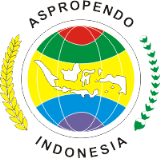Business Activities Based on Business Model Canvas in Importance of Tourism Village
Abstract
The business activities in Pentingsari tourism village have yet to maximize profits for the village community fully. This research aims to develop a business activity model based on the Business Model Canvas (BMC) to enhance tourism management. Utilizing David Clark's capability theory, the study employs a quantitative approach, survey methods, and explanatory research. A census of 127 heads of households was conducted as respondents. Four variables are examined: two exogenous and two endogenous, analyzed through path analysis. Path coefficients were estimated using regression statistics with SPSS 25. The findings indicate that community empowerment in tourism management (X1) significantly influences the level of business activity (Y2) through collaboration among business actors (Y1), with a path coefficient of 0.734, supporting the hypothesis (Ha). Additionally, achieving aspirations related to welfare (X2) impacts the level of business activity (Y2) via cooperation between business actors (Y1), with a path coefficient of 0.703, also supporting the hypothesis (Ha). Consequently, a business activity model based on the BMC was established. In conclusion, enhancing business activities in Pentingsari tourism village is contingent upon community empowerment in tourism management and achieving community welfare aspirations facilitated through collaborative efforts among business actors.
Keywords: achievement aspirations; business activity; BMC; community empowerment; tourism villagesFull Text:
PDFReferences
Ali, M. Y., & Kodrat, D. S. (2017). Factors causing business failure in. Journal of Management and Business Start-Ups, 2 (April) 1-8 https://journal.uc.ac.id/index.php/performa/article/view/445/398
Amelia, F., & Nazaruddin. (2022). Business activities in review of legal aspects of agreements. Al-Hiwalah: (Sharia Economic Law), 1 (1), 171–182 DOI:10.47766/alhiwalah.v1i2.885
Ardika, I. G. (2018). Sustainable tourism: Paving the way through the community. PT. Kompas Media Nusantara.
Buwana, M. A. L., & Nursyamsiah, S. (2018). Analysis of open innovation implementation: The role of external cooperation on product innovation and company performance (empirical study of batik small and medium enterprises (SMEs) in Yogyakarta). Indonesian Journal of Business Management, 6 (1997), 45–64. https://doi.org/10.31843/jmbi.v6i1
Chandra, E., Lie, D., Butarbutar, M., & Efendi, E. (2018). The role of business cooperation in increasing sales volume at the Pematangsiantar print media store. SULTANIST: Journal of Management and Finance, 2 (2), 5–11. https://doi.org/10.37403/sultanist.v2i2.29
Dachlan, U. (2014). Complete guide to structural equation modeling. Lantern of Knowledge.
Fitriaty, F., Lubis, T., Adriani, Z., Elliyana, D., & Widiastuti, F. (2021). Assistance and training on business management strategies in the Muaro Jambi tourist area in Muara Jambi village, Maro Sebo sub-district, Muaro Jambi district. Journal of Civil Community Service, 1(2), 205-209. https://doi.org/10.51805/jpmm.v1i2.42
Ghozali, I. (2016). Multivariate analysis application with the IBM SPSS 23 program. Semarang: BPFE Diponegoro University.
Hendriyati, L. (2019). The influence of online travel agents on room reservations at the Mutiara Malioboro Hotel Yogyakarta. Travel Media, 17 (1), 1–10. https://doi.org/10.36276/mws.v17i1.145
Indrayani, L. (2020). The meaning of financial literacy in the sustainability of Balinese women's home industry businesses. JIA (Scientific Journal of Accounting), 5 (2), 407–428. https://ejournal.undiksha.ac.id/index.php/JIA/article/view/29858
Jalal, & Rokan, M. K. (2022). Impelementation of Bank Syariah Indonesia marketing strategy KCP Medan Pulo Brayan in increasing micro business micro financing. Journal of Public Administration Research, 2 (2), 96–111. https://doi.org/10.52403/ijrr.20230459
Knoke, D., Bohrnstedt, G., & Mee, A. P. (2002). Statistics for social data analysis: Fourth edition. F. E. Peacock Publishers, INC.
Muhamad, R. D., & Cahyono, EF (2020). Islamic product attributes on purchase intention in coffee shops. Journal of Theoretical and Applied Islamic Economics, 6 (12), 2485–2497. https://doi.org/10.20473/VOL6ISS201912PP2485-2497
Masturina, D. (2018). The influence of self and self-competence on career planning. Psikoborneo, 6(2), 198–205. https://e-journals.unmul.ac.id/index.php/psikoneo/article/view/4558
Osterwalder, A. Y. P. (2017). Business model generation. PT Elex Media Komputindo.
Prihadi, D., & Susilawati, A. D. (2018). The influence of e-commerce capabilities and promotion on social media on marketing performance. Benefit: Journal of Management and Business, 3 (1), 15-20. https://doi.org/10.23917/benefit.v3i1.5647
Putri, C. F., Hunaini, F., & Sahbana, M. A. (2016). Development of clean water facilities, river tubing facilities and promotion at river tourism locations. National Seminars and Product Degrees, 594–600. http://research-report.umm.ac.id/index.php/research-report/article/view/864
Raharja, S. J., & Natari, S. U. (2021). MSME business development during the pandemic through optimizing the use and management of digital media. Kumawula: Journal of Community Service, 4 (1), 108-123 https://doi.org/10.24198/kumawula.v4i1.32361
Sarwono, J. (2012). Path analysis with spss: Theory, application, analysis procedures for thesis, theses and dissertation research. PT Elex Media Komputindo.
Selwen, P., & Rahena, S. (2021). The influence of self-confidence on students' public speaking abilities. Journal of Buddhist Education and Contemporary Social Issues, 3 (2), 63-69. https://doi.org/10.56325/jpbisk.v3i2.46
Shaferi, I., & Handayani, S. R. (2013). Identify financial management for online business opportunities. Economics and Business, 25 (2), 846–851. http://www.jp.feb.unsoed.ac.id/index.php/sca-1/article/view/722
Suteja, I., Wahyuningsih, S., & Rosida, L. (2021). Partnership collaboration dalam pengelolaan desa wisata ekologis di kawasan Geopark Kotaraja Kabupaten Lombok Timur. Jurnal Ilmiah Hospitality, 10 (1), 9-20. https://doi.org/10.47492/jih.v10i1.663
Theresiana, L., & Setyanto, Y. (2018). Marketing communication strategy used by Guten Morgen Coffee Lab and Shop to attract consumers. Prologia, 2 (2), 392–399. https://doi.org/10.24912/pr.v2i2.3717
Wahyono, T., Sadarman, S., Handayani, T., Trinugraha, A., & Priyoatmojo, D. (2021). Evaluation of carcass performance of male local and New Zealand white rabbits at different slaughter weights. Animal Husbandry Journal, 18(1), 51–51. http://dx.doi.org/10.24014/jupet.v18i1.11523
West, E. A., Travers, J. C., Kemper, T. D., Liberty, L. M., Cote, D. L., McCollow, M. M., & Stansberry Brusnahan, L. L. (2016). Racial and ethnic diversity of participants in research supporting evidence-based practices for learners with autism spectrum disorder. The Journal of Special Education, 50(3), 151–163. https://doi.org/10.1177/0022466916632495
Wulandari, I. G. A. A., Setiawima, N. D., & Djayastra, K. (2017). Analysis of factors affecting precious meal jewellery industry production in city. Udayana University Economics and Business E-Journal, 6 (1), 79–108. https://ojs.unud.ac.id/index.php/EEB/article/view/23063
Yulhaidir., Bisyri, M., & Matandatu, C. D. (2022). Teraskita Hotel marketing communication strategy during the pandemic. Journal of Indonesian Communication, 4, 54–65. https://doi.org/10.33366/jkn.v4i1.108
Zulmi, F. (2020). The role of the tourism sector in regional original income. Economics, 12 (4). 2591-2596. https://dspace.uii.ac.id/bitstream/handle/123456789/11645/JURNAL Faisal Zulmi.pdf?sequence=2&isAllowed=yRefbacks
- There are currently no refbacks.













